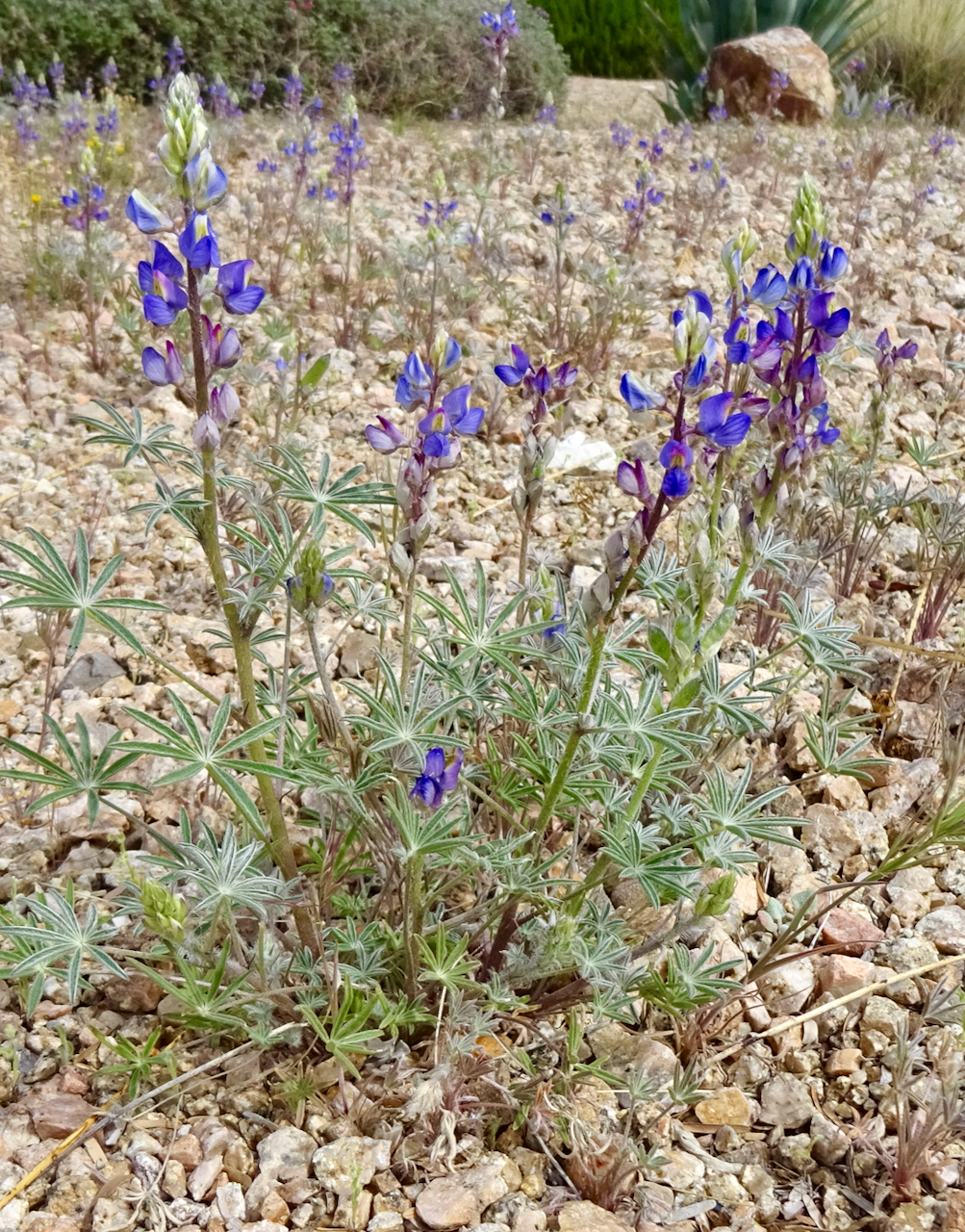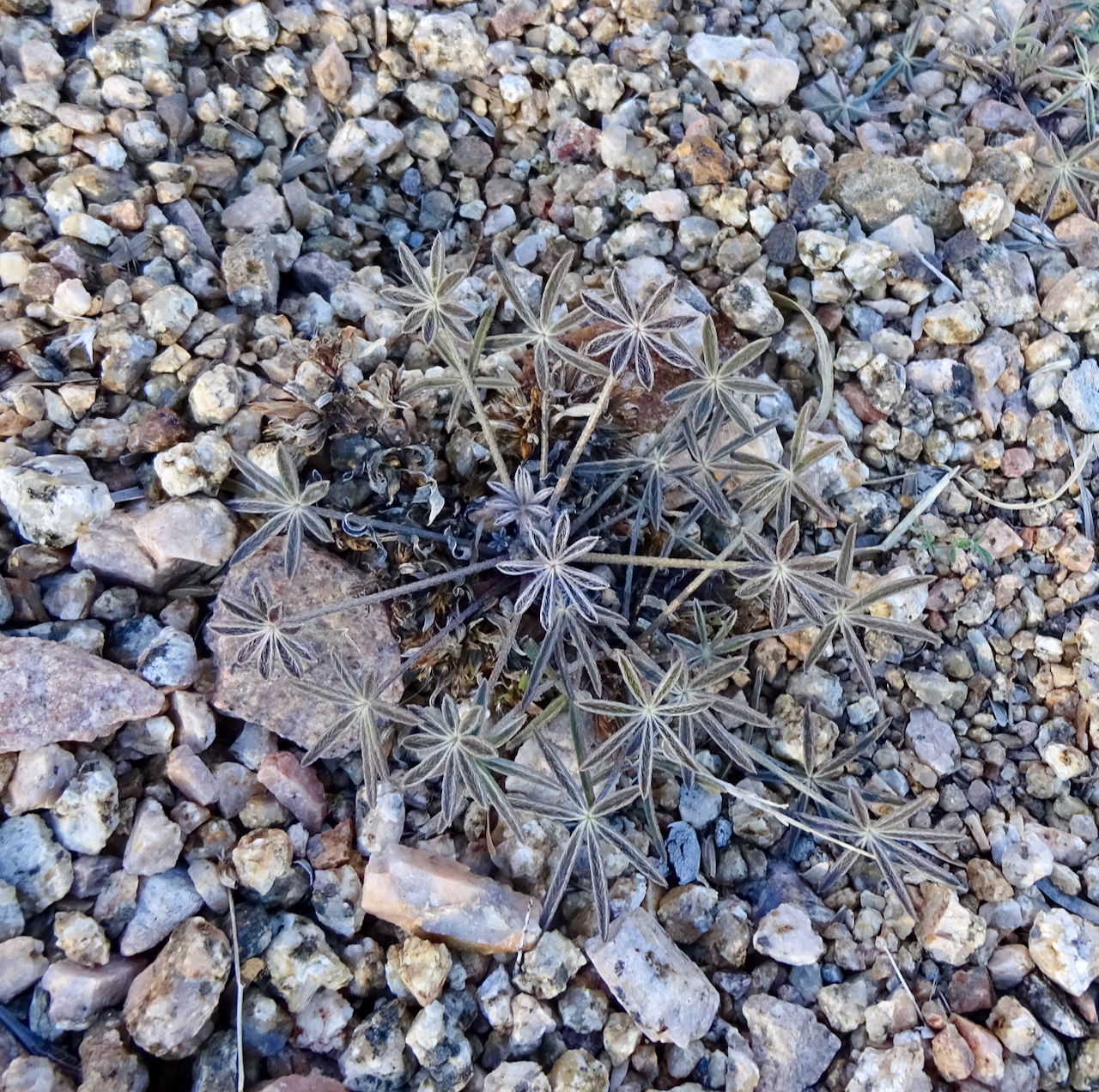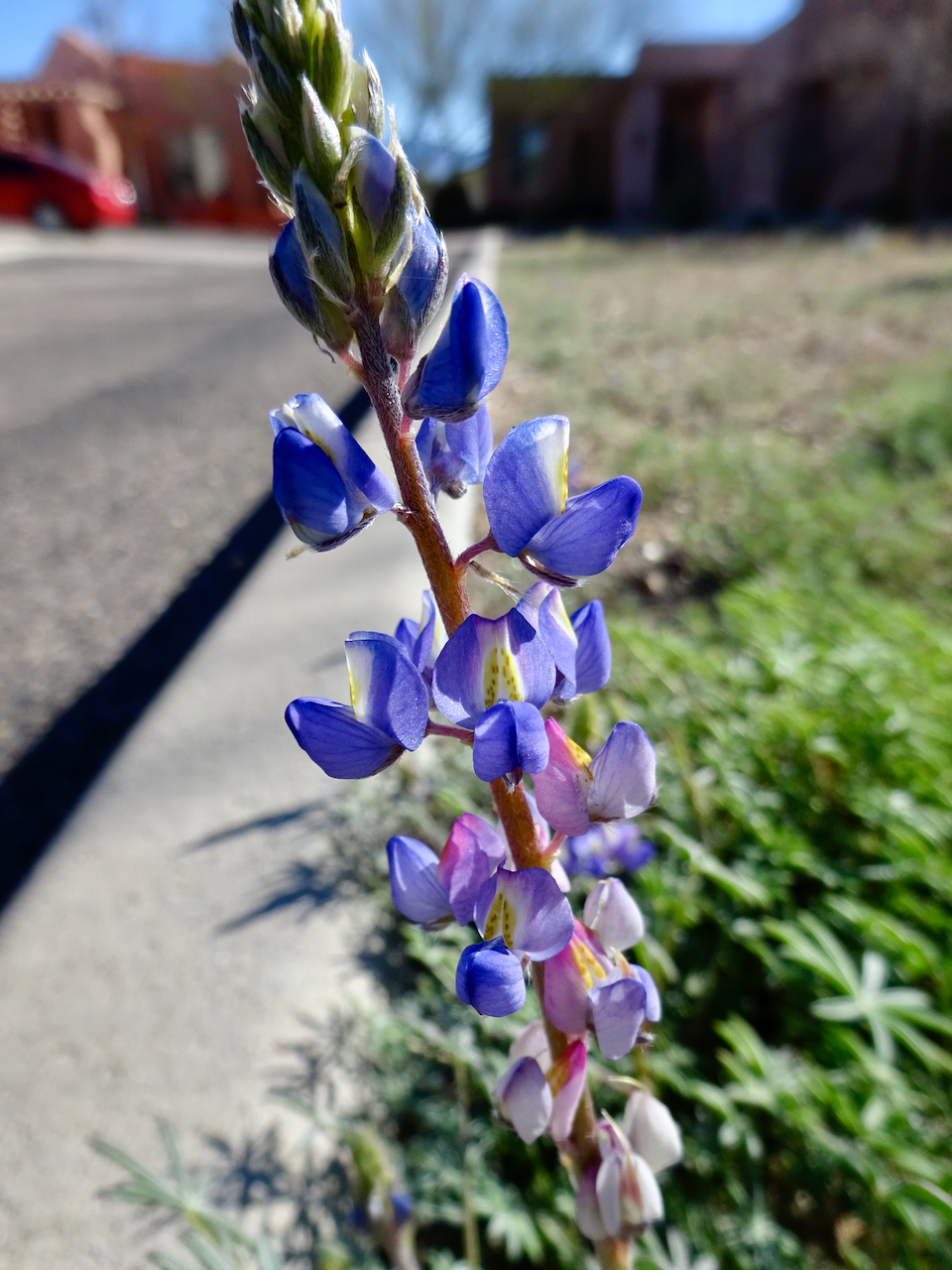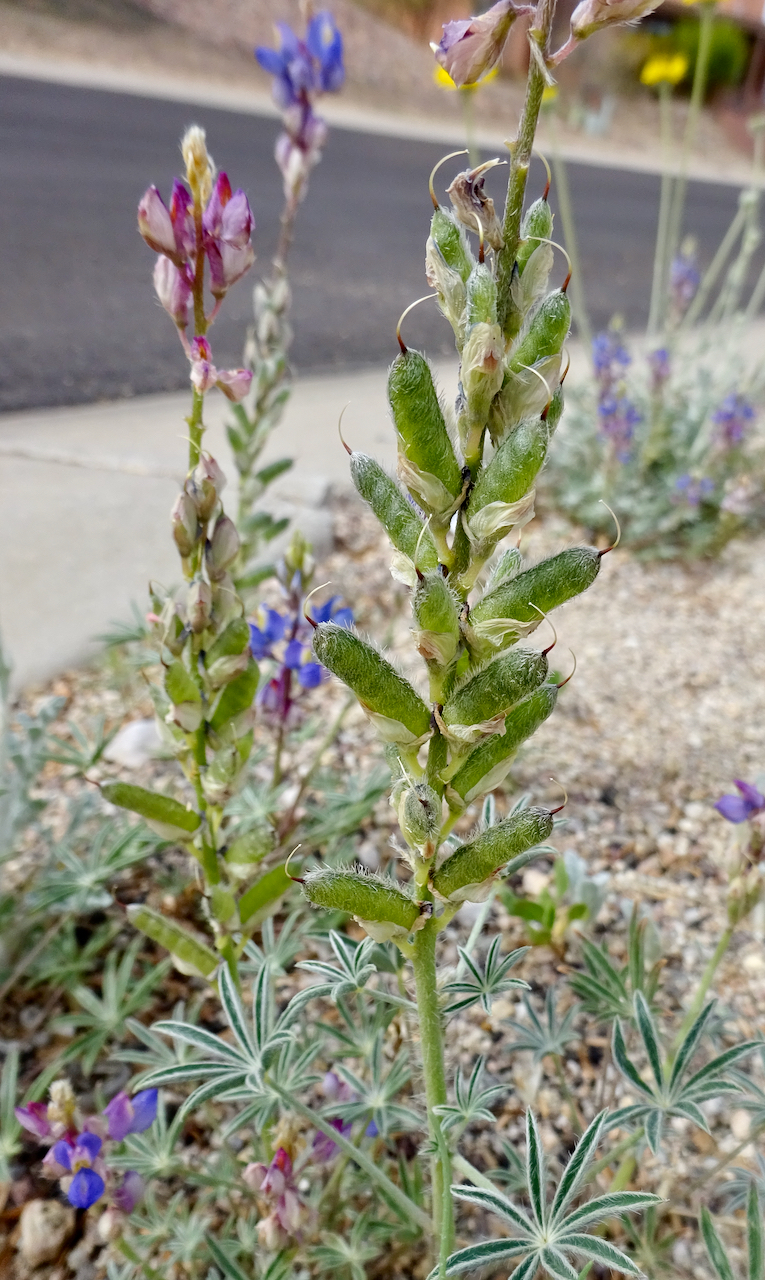Coulter's Lupine
Lupinus sparsiflorus
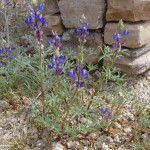
About the Plant
Also known as desert lupine, Coulter's lupine is one of the most common native spring wildflowers in southern Arizona. This annual has showy blue flowers held on stalks a foot or more in height. In spring it can carpet the desert, often appearing with other spring annuals such as California poppy. The renowned Texas bluebonnets are also lupines.
Grow Coulter's lupine from seed (available as a component of most "spring wildflower" mixes for our area or as pure seed from speciality nurseries) by sowing in fall. Some authorities recommend soaking in water before planting. This annual will reseed to return each year if allowed to stand in place until the seed pods have opened to release seed.
Bajada lupine also grows in our area. In comparison, Coulter's lupine is showier and larger. Bajada lupine has hairier leaves with wider leaflets and smaller, pinkish flowers that are almost hidden in the foliage.
Note: both the plant and the seeds of lupine are poisonous.
Wildlife value: nectar plant for insect pollinators. May be a host plant for butterflies.
More Information
Technical botanical description from SEINet
